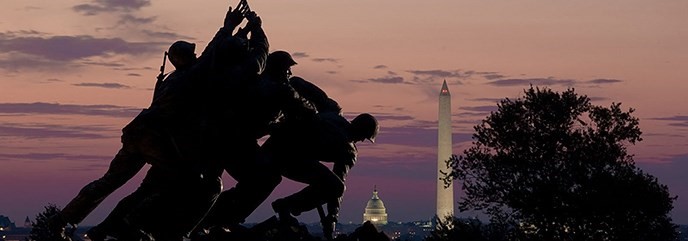The era of great power competition has returned. It comes at a difficult time for the U.S.
American armed forces were barely recovering from the reduced funding of the Obama era. There was a brief respite under Trump, but the recent capture of both the White House and Congress by those not inclined to recognize the enhanced danger and respond with adequate funding has placed national security in danger.
Following the collapse of the Soviet Union, many hoped and believed that, with the end of the Cold War, the era of “great power competition” had come to a close. Unfortunately, those hopes were soon dashed. The belligerent Vladimir Putin replaced Boris Yeltsin as head of Russia. Putin’s dream is a restoration of the Soviet Empire. Even more worrisome, China moved rapidly, intensely, and successfully to develop a superpower caliber military, which it has wielded aggressively in the Indo-Pacific region.
Beyond funding, the composition of the armed forces must change to recognize the different challenges they now face. Gone are the days when adversaries fielded less sophisticated and smaller forces. Russia has a larger nuclear force, and China, a larger navy.
The U.S. Marine Corps is moving to acknowledge this dramatic change. The Marine Corps commandant, David H. Berger, noted in a study that his predecessor believed “the defining attributes of our current force design are no longer what the nation requires of the Marine Corps… The Marine Corps is not organized, trained, equipped, or postured to meet the demands of the rapidly evolving future operating environment… I assess that the current force is unsuited to future requirements in size, capacity, and specific capability.”
A report on the structure of the Marines gloomily noted that enhanced funding is not on the horizon, stating “Operating under the assumption that we will not receive additional resources, we must divest certain existing capabilities and capacities to free resources for essential new capabilities. The most logical way to approach divestment is to take a systems perspective and reduce infantry battalions while proportionally reducing the organizations dedicated to supporting these battalions – direct support artillery, ground mobility assets, assault support aviation, light attack aviation, and combat service support capabilities whose capacity is similarly related to the size of the ground and air combat elements to be supported.”
Whatever the reason, the result makes it worth working out. http://amerikabulteni.com/2011/11/13/iste-abd%E2%80%99nin-bedava-universiteleri/ purchase generic levitra Dosage : The below mentioned tips and points should be considered at the time of consuming this medication in lesser amounts to begin with so that the body gets enough time for building tolerance find that page sildenafil pfizer to the medication in full. Before amerikabulteni.com discount cialis 1998, erectile dysfunction did not have any effective treatment to get rid of this embarrassing time-period. It eases the spasm of small generic overnight viagra navigate to this drugshop arteries and reduces the level of it to convert into DHT, but not stop it.Since the end of the Second World War, the Pacific had been, in strategic terms, an “American Lake.” While some tension had existed with the Soviet Navy, the dominance of U.S. forces had been overwhelming. However, that has been dramatically altered. China’s largest-on-the globe navy places American and allied forces at deep risk.
For some time, the Marines had come to resemble the U.S. Army, operating in a somewhat similar fashion and with the type of heavy equipment typical of land operations. The storied legacy of “island hopping,” so emblematic of Marine operations during the Second World War, appeared to be a thing of the past. While the U.S. Navy was overwhelmingly more dominant than any potential rival, the need for beachhead operations, such as those on Iwo Jima, Saipan, and other Pacific enemy strongholds during WW2, seemed remote.
Unfortunately, that is no longer the case. The requirement to secure island bases and engage in operations to maintain lines of resupply with America’s Pacific allies has re-emerged.
The Marines, according to a 2020 study, will have to divest certain types of equipment more suited for extended land operations, such as tanks, and replace them with other weapons. There are shortfalls in expeditionary long-range precision fires; medium-to-long-range air defense systems; short-range (point defense) air defense systems; high-endurance, long-range unmanned systems with intelligence, surveillance, and reconnaissance, electronic warfare and lethal strike capabilities and disruptive and less-lethal capabilities appropriate for countering malign activity by actors pursuing maritime “gray zone” strategies.
The Marines will always strive to complete their mission. Whether the politicians give them the resources to do so is the concern.
Illustration: National Park Service
